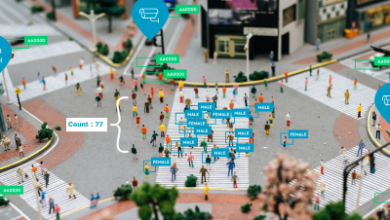
Have you ever been frustrated while trying to navigate a website? Poor website navigation can make it difficult to find the information or product you’re looking for. In this blog post, we’ll share 6 tips for designing great website navigations. By following these tips, you can create a user-friendly website that is easy to navigate. So, let’s get started!
In today’s digital world, websites are a crucial part of most businesses. However, all too often businesses focus more on looks than functionality when it comes to their websites. This often results in poorly designed website navigations that frustrate users and cause them to leave the site. In this blog post, we’ll share 6 tips for designing great website navigation. Let’s get to it!
Tip 1:
Design Navigation Around Site Structure When designing website navigation, you want to ensure that information architecture is top of mind. Many designers focus on the visual design before they’ve worked out how content will be categorized in a site. It can be helpful to take a step back and do some research to determine how your users will be navigating before you begin designing. User interviews can help you find out if there are any pain points with the current system. While user testing can give you insight into how users will navigate once they’ve learned the site structure. Once you have an idea of how content is categorized on the site, you should create a site map and flowchart to outline how users will navigate.
Tip 2:
Don’t Make Your Users Think As designers and developers, we spend an enormous amount of time browsing other websites and learning about new design techniques. The downside of this is that we often forget what it’s like to be a first-time user. When designing navigations, you should always keep in mind how first-time users will interact with your website. This means it’s important to avoid common user experience mistakes that cause frustration. For example, if a user doesn’t know where to look for information on your site or how the site structure works. They might end up leaving the site. If a user is faced with too many choices at once, they will freeze up and be unable to decide which link to click on next. When designing website navigations, you should aim to make your users think as little as possible while still allowing them to complete their tasks.
Tip 3:
Determine Your User’s Main Goal Users have limited time. So it’s important that they can quickly find what they are looking for on your website. However, there are times when users will want to go deeper into a website and explore links rather than finding the information they need as quickly as possible. When designing website navigations, you should always keep in mind the different types of users. Some users will want to quickly find what they are looking for, while others might be in the exploratory phase and exploring site content rather than trying to find a specific piece of information.
Tip 4:
Reduce Visual Clutter When designing website navigations, it’s important not to overcrowd links with other design elements. No matter how eye-catching your website is. If users can’t find the information they want on your site it won’t matter. If you make your navigations too busy. It will be difficult for users to tell what is a link and what is not. This makes it difficult for them to move throughout the website and reduces the chances that they will explore links rather than find what they are looking for quickly.
Tip 5:
Use Icons Sparingly Icons can be a great way to add some personality to website navigations, but some designers (and clients) get carried away. In the rush to create a unique design. Overuse of icons can result in busy-looking website navigations that are more difficult to use. When designing website navigations, you should always keep in mind that less is more. If your navigation buttons look like they belong on another site, users will be confused about where they are on the website or what you do. By choosing icons that compliment your brand and color scheme, you can add a bit of personality while avoiding a cluttered look.
Tip 6:
Keep Your Navigations Consistent When designing website navigations. It’s important to stick to a system that will make sense to your users and allow them to easily navigate throughout your site. For example, if you use only left navigation on the home page. Users will assume that all your pages use left navigation. This means they won’t explore the right-hand side of your website where other navigations might be present. Making sure your website is consistent throughout makes it easier for users to find what they are looking for, which reduces user experience friction and increases conversions.
Tip 7:
Don’t Rely on Colour Alone Your website’s navigation is sometimes the only indication of what you do. If your design doesn’t match your branding. It will be difficult for users to navigate throughout your site and figure out what services you provide. When designing website navigations, one of the best approaches is pairing icons with text. This makes it clear what each link is for. And what users can expect to find. If your navigations are always paired with text, they will no longer be the only way for users to navigate throughout your website.
Tip 8:
Use Icons Responsibly As mentioned in Tip 5, icons need to compliment your brand rather than clash with it or make your website look like another. When designing website navigations. It’s important to keep in mind other elements on your site and how they will work together. It might be tempting to use a “play” button as an icon for a media section of your website. But that can become confusing if the same image is used in other places throughout your site.
Tip 9:
Avoid Audio Most users will turn off audio when browsing websites because it can be annoying when it’s not what they are expecting. When designing website navigations. You should avoid using sound effects on the main navigation because most users will expect a muted site and become distracted or frustrated when that isn’t the case.
Tip 10:
Design for Mobile Users No matter how many people use mobile devices to browse the web. Some designers still dismiss them as a priority. As seen with other design elements. This can result in site visitors not being able to find what they are looking for or having difficulties navigating through your website. When designing website navigations, you should make sure they are functional on mobile devices. This doesn’t necessarily mean making them smaller. But rather ensuring that the information is presented in a way that makes sense for users on different screen sizes.
Conclusion
Browsing online is an increasingly popular method of finding services and products. As more people transition to mobile devices, the web browsing experience becomes more diverse and complex. This is why it’s important that your website can accommodate all types of visitors by providing an intuitive navigation system that will allow them to easily find whatever they are looking for. By following these 10 tips. You will be able to create effective website navigations that are both functional and good for your users.






